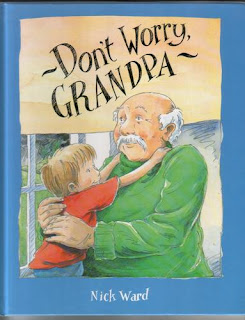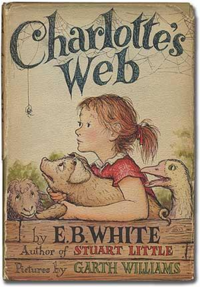Pre Workshop Readings:
Winch, G., Ross Johnston, R., March, P., Ljungdahl, L. & Holliday, M.
(2010). Literacy: Reading, Writing and Children’s Literature (Fourth
Edition). Melbourne: Oxford. Chapter 2 and 6
Chapter 2:
The context and purpose of reading:
Writers construct texts in ways where their social purpose and cultural background can affect the way it is written. Newspapers, instructions and any other type of text will use different language in different ways to get their information across to the reader effectively. The context in which texts are written and the purpose of why it is written will make our knowledge of reading more effective.
Selecting Texts:
'Effective readers select the right text' (Winch, 2010, pp 31). By selecting the right text we can be effective readers as we are fulfilling our need of what we love to read. Different types of texts we read fulfil different purposes as each different text may use different language to construct different meaning and portray different ideas.
The reading cue systems of source of information:
'Cues systems supply the reader with information to construct meaning' (Winch, 2010, pp 32). There are four sources we continually draw on throughout reading which are:
- semantic information
- grammatical information
- phonological-graphological information
- visual/ pictorial information
The basic strategies of reading:
'Effective readers know and use effective processing strategies '(Winch, 2010, pp 42). Reading strategies provide the reader with meaning and an overall plan of the text. Also know as metacognition strategies they include skimming and scanning the text, sampling, predicting, confirming, understanding, and correcting errors in meaning as they occur. Rereading parts of text, changing reading speed, and questioning oneself are also strategies of reading.
Effective Reading:
To be an effective reader we must 'solve' a text and construct meaning using a range of reading practices( four resources of a literate person). The reader must also use the reading cue systems as well as their prior knowledge on literature and language.
Chapter 6:
Different types of texts:
We interact with text by bringing in our own knowledge which helps to construct meaning from what has been written. Text can differ by being constructed for different social purposes and the structures and features are displayed specifically for these purposes. Texts can be literary or factual according to purpose.
Concepts about print:
There are many concepts about print that is essential to know. It is essential to know that English print is to be read from left to right, top to bottom. There are many concepts about book print and screen print that it is important to know.
Text and the Locus of meaning:
'Meaning is constructed as the text and the reader interact'. (Winch, 2010, pp 116). We use our own world knowledge and understanding to construct meaning from the text.
Context and text:
'Texts are embedded in the contexts in which they 'do their work'' (Winch, 2010, pp 116). As readers we can get a strong idea of what type of text we are using, why it was written and why we want to read it. The more we read the stronger comprehension we will have and will be able to relate to language the writer is using.
Reading literacy texts:
'Literary texts are an important part of an effective reading program' (Winch, 2010, pp 117). Literary texts are read for engagement in pleasure and excitement of the text. To be an effective reader of literary texts teachers must supply the students with a wide range of texts e.g. picture books, novels, poetry, plays and films.
Reading factual texts:
Factual texts can be a challenge for some readers. Factual texts have their own structure and grammatical features. Factual texts are written from a particular point of view and employ features that serve to reinforce the point of view.
Selecting texts for reading program:
The selection of texts for each part of the reading program plays an important role in students' reading success. The teachers role is to include a variety of texts appropriate levels of difficulty to cater for different needs. Cultural backgrounds and interests need to be taken into consideration when selecting a text.
Matching texts to students' needs:
Identification of each students independent and instructional reading levels need to be identified to indicate which texts are too difficult for the students. There are 3 different anallysis' these are independent reading level, instructional reading level and below instructional reading level.
Workshop Summary:
The first task in the workshop is to use our skills and knowledge of the English language and structure of writing to decode this sentence:
The witch is stirring her witches brew
The cognitive processes we went through to work out the meaning of this sentence was:
-Using the common structure of writing (Syntax). We all understood that lots of sentences start with 'the'.
- Link the patterns together e.g once we decoded one of the words we filled in with all the symbols we know with the letters.
- Use the picture we were supplied with as graphological information to interpret what the text was saying.
- Grammatical information to predict what word might come next and understand how each word in the text achieves meaning e.g is had to be 'is' because no other two letter word starting with 'i' would make sense in this sentence.
The second workshop task was to fill in the blank spaces in the worksheet ' Post office Text'
The strategies used to fill in in the blanks was to:
- read on and come back to the space to find a word that made sense.
- Fill in the space with a word and re-read over the sentence to make sure it sounds right.
- Understand the sentence structure by realising after the word 'an' the next word must start with a vowel to make sense.
Key Ideas to take out of the Workshop:
Graphological, meaning and structure are all equally important to help develop and build cues for students understanding from narratives and different forms of text.
The four resources of a literate person are:
Code breaking- involves the sense of communication codes such as print on page, illustrations and moving images or gestures.
Text participation - involves comprehending and composing texts.
Text Using - involves understanding the purposes of texts for different social and cultural functions.
Text Analysing - this involves ways in which texts are used to position readers, viewers and listeners.




























